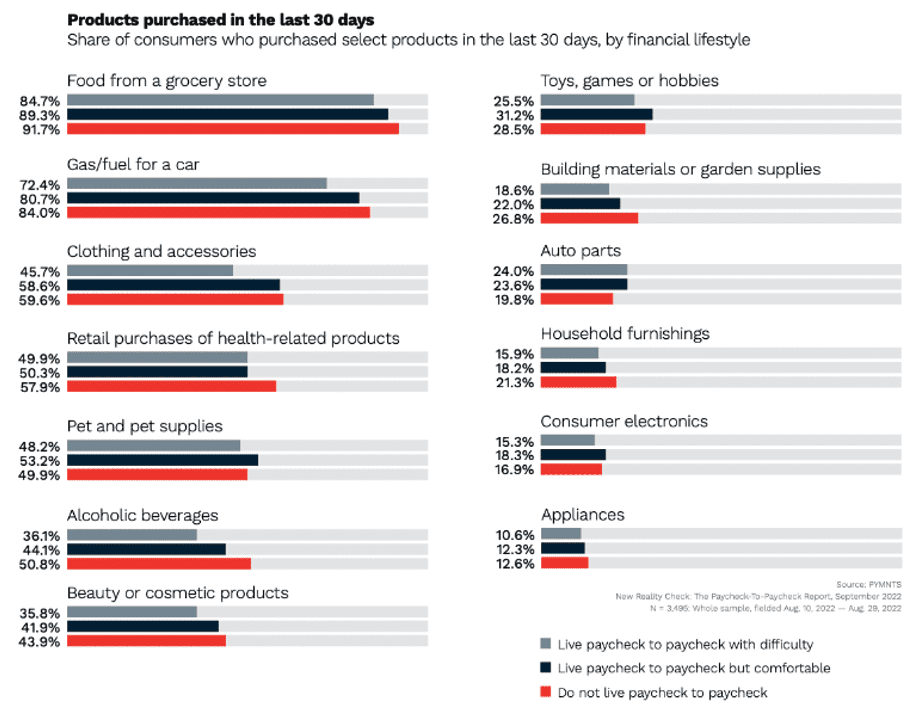Core CPI Misses the Reality of Paycheck-to-Paycheck Pressures

Core CPI numbers say inflation’s sting is easing. The paycheck-to-paycheck reality says otherwise.
At a high level, the Consumer Price Index exists as a benchmark that measures how much a “basket” of goods and services cost versus some point in time — a month ago or a year ago. As the latest government data shows, prices tied to that basket rose at relatively tempered rates.
But it is the consumer’s real basket of spending on daily life — detailed in our monthly series of paycheck-to-paycheck reports done in collaboration with LendingClub — that matters to consumers and will shape what they can and will spend over the longer term.
As for the official stats, inflation “eased” to an 11-month low, as headline stats from the Bureau of Labor Statistics showed an annual price increase in the CPI slowed to 7.1% in November.
Drill down a bit, and the core number, which strips food and energy prices from the basket of expenses, slipped to 6% annually in November. As measured month over month from October’s levels, the CPI increased just 0.1% from October, the slowest pace in almost a year, and the monthly core inflation rose just 0.2%.
What the Government Said
The government release showed that food prices increased 0.5% in November, and the “food at home” index was up during that period, while the same category was 12% higher than a year ago. There’s been a brief respite in energy prices, which were down 1.6% month over month (thanks to a decline in gas prices) but is up 13% through the past year, boosted in part by rising prices for electricity and heating oil. It takes more money, then, to keep the home warm and habitable. Shelter is running 7.1% more expensive than a year ago.
Wall Street and economists might cheer the CPI data. But in the latest edition of “New Reality Check: The Paycheck-to-Paycheck Report,” and in previous editions, it’s clear that the juggling act to keep the proverbial basket filled is a tough one. As many as 63% of us live paycheck to paycheck, and food and gas are among the top, critical, everyday expenses that are essential for, well, everyone. The Core CPI may choose to exclude those expenses; individuals and families cannot. The chart below shows just how non-discretionary those expenses are, no matter one’s financial standing.

Consumer electronics, toys and games, even appliances are garnering a lower share of consumer spending, which indicates where we may see a continued pullback into the new year.
If those core items — food, lodging and gas — remain stubbornly expensive, the money that’s laid out today just to keep the lights on and the fridge stocked cannot be saved for tomorrow. Those pressures are reflected in the newest paycheck-to-paycheck report. The data also found that 57% of paycheck-to-paycheck consumers think high inflation has diminished their capacity to reach their long-term financial goals.
Building the cash cushion that might help supplement future spending is no easy task. Compared to a year ago, 32% of all consumers reported a decrease in the portion of their paycheck they are able to save, while 42% of struggling paycheck-to-paycheck consumers said the same. Even if dollars are funneled into the savings account, the purchasing power is less, the real-life spending baskets shrink.
The government data may signal that as far as inflation is concerned, the worst is over. The paycheck-to-paycheck consumer is less than convinced.